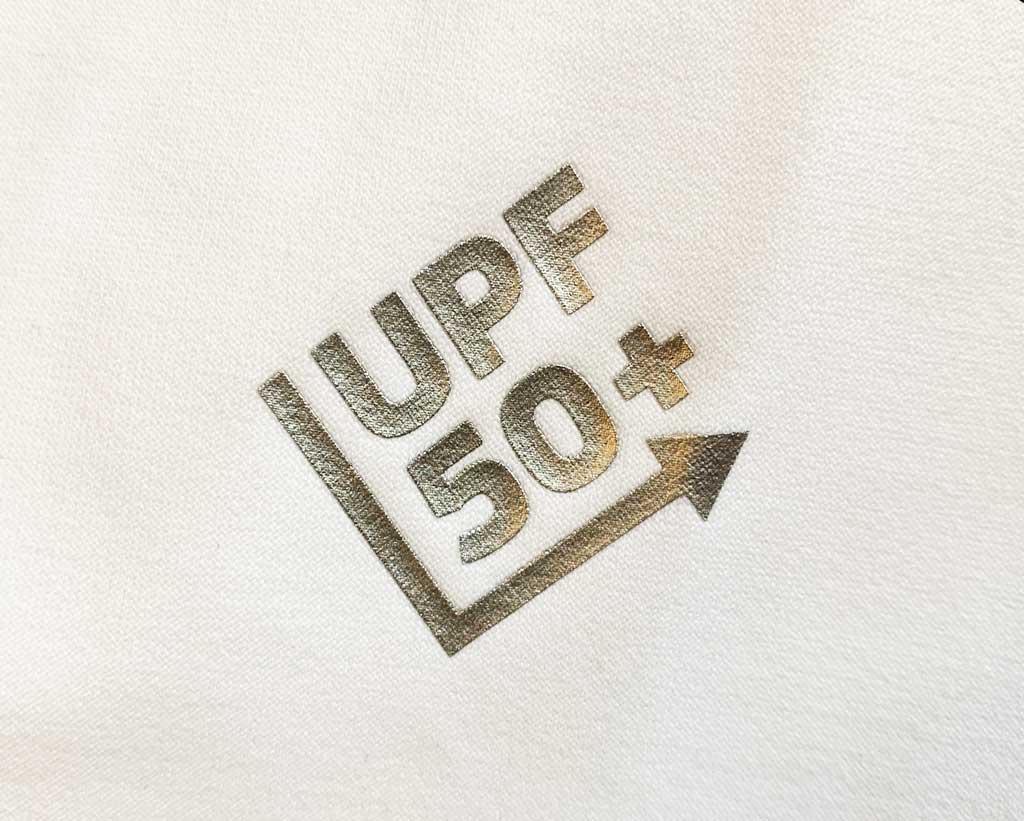A Guide to UPF Apparel

(What is UPF and why is it important to know what protection level to choose)
Sun protection is imperative for anyone who spends time outdoors. An estimated 90% of non-melanoma skin cancers are directly associated with exposure to UV radiation from the sun. The most common form of skin cancer, basal cell carcinoma, is diagnosed in approximately 4.3 million Americans each year. Sunscreen lotions work well to block cancer-causing radiation, but they require frequent re-application and can stain clothing. For many people, especially those who frequent the beach or engage in watersports, a garment with a UPF rating is a more practical choice.
One of the greatest benefits of UPF clothing is the consistent coverage it offers to those who need maximum protection from the sun. Many of us have very fair skin and can burn quite easily. The strongest sunscreens can prevent burning, but they only do so when re-applied at regular intervals. Even when a person is fastidious about re-applying sunscreen, it can be rubbed off when playing in the sand, lounging on floatation devices, or paddling a surfboard. Surfers popularized rash guards, which are shirts worn to limit chest and arm abrasion from paddling a surfboard. A long-sleeved, UPF-rated rash guard also provides excellent protection against UV radiation for the entire upper body, and they have become very popular with snorkelers, open-water swimmers, and non-surfing beach aficionados of all kinds.
Strange as it may sound, UPF clothing also provides ecological benefits by limiting the need for sunscreen. When a person swims in the ocean with sunscreen on, chemicals like oxybenzone are released into the water. Oxybenzone is highly toxic for marine life, and it is so powerful that a single drop in more than 4 million gallons of water* can endanger marine organisms. It is particularly dangerous for coral reefs as it disrupts their reproduction and growth cycles and ultimately leads to bleaching. Mineral particles in sunscreen also contribute to coral bleaching as they catalyze the production of hydrogen peroxide in ocean waters.
Even when sunscreen users don’t go swimming, their sunscreen is eventually washed down a drain when they shower. And when beach-goers use aerosol sunscreens, much of it gets sprayed onto the sand and eventually gets washed into the ocean. A 2016 article** in the scientific journal Archives of Environmental Contamination and Toxicology estimates that as much as 14,000 tons of sunscreen ends up in our oceans each year.
While UPF clothing can limit the use of sunscreens, it is also important to pay attention to the contents of any sunscreen that is applied to the face, hands, and any other exposed areas. Many companies now manufacture “reefsafe” sunscreens that don’t contain harmful chemicals, and these should be used at all times.
What Is UPF?

UPF is an abbreviation for Ultraviolet Protection Factor, and it’s a standard used to measure the amount of sun protection afforded by fabrics. It is a relatively new standard; sun-protective clothing had originally been rated with the familiar SPF (Sun Protection Factor) that is still used within the context of sunscreen products. Because the use of UPF is voluntary according to Federal Trade Commission rules, there are some clothing manufacturers who still use SPF to rate their products. However, universal application of the standard can be expected in the future.
A fabric’s UPF rating is an indication of the percentage of ultraviolet (UV) light that is blocked by a fabric. The rating system uses a range of numbers from 15 to 50 to denote the percentages. For example, a fabric with a rating of 50 blocks approximately 98% of UV, and a fabric with a rating of 15 blocks approximately 93% of UV.
UPF ratings make it easy for a consumer to decide on a particular rating that suits them. A person with a lower risk factor may opt for a garment with a rating of 15, whereas someone who is concerned with maximum protection would choose a rating of 50. It is important to note that in either case, the consumer is getting significant sun protection. For the average person, it is not necessary to fret too much over the differences between, for example, 25 and 40. Garments with either rating will provide significant UV protection.
Caring for UPF Fabrics
Clothing with UPF-rated sun protection does require a bit of care to retain its effectiveness. Here are a few simple guidelines to extend the life of sun-protective clothing:
- Wash or thoroughly rinse UPF garments after use in saltwater or chlorinated pools.
- When machine washing UPF garments, always use cold water and a gentle cycle.
- Use only mild detergents.
- Dry garments flat or hang them to dry but avoid placing them in direct sunlight when drying.
- Never tumble dry UPF garments, and never dry clean or iron them.
- Do not wring out UPF garments. If they are soaking wet, wrap them in a towel to absorb the excess water.















Leave a comment